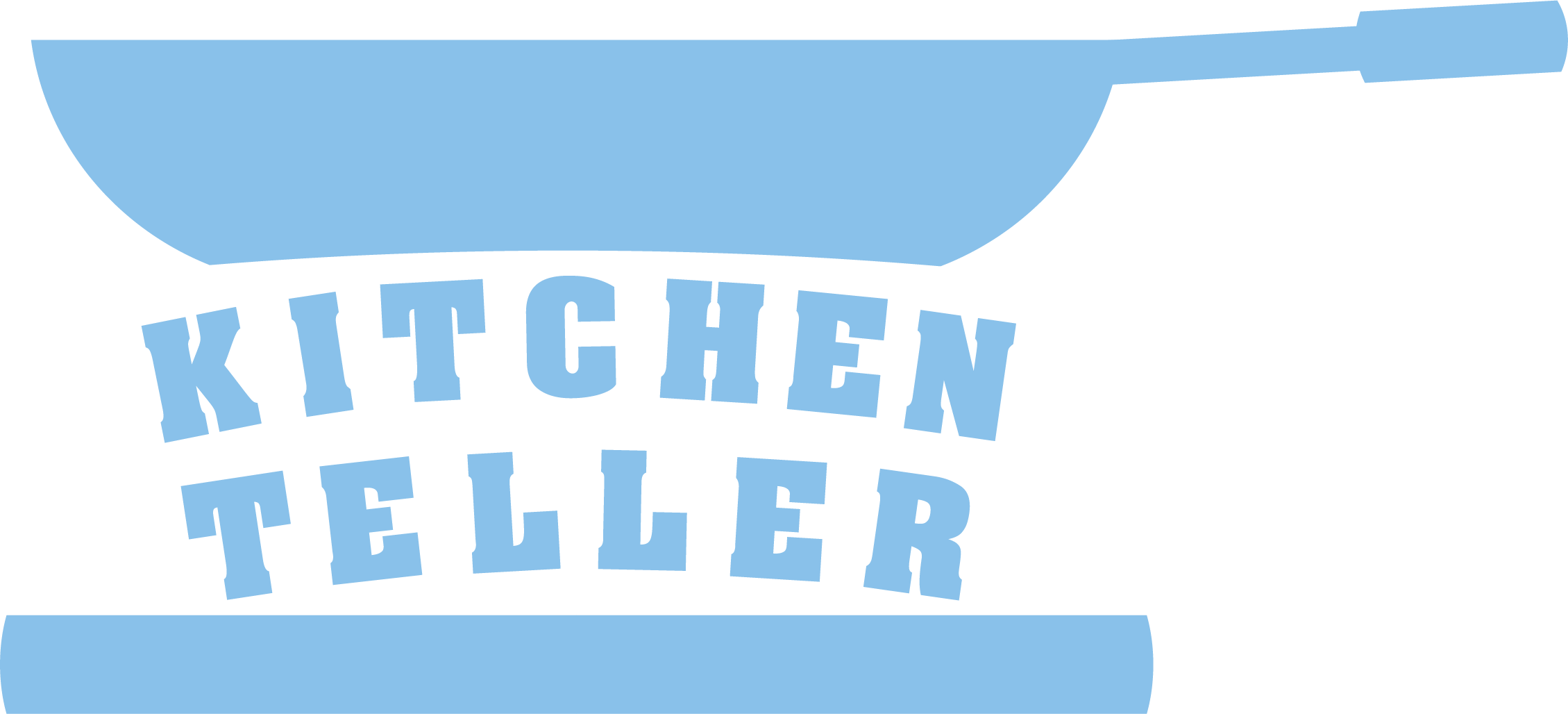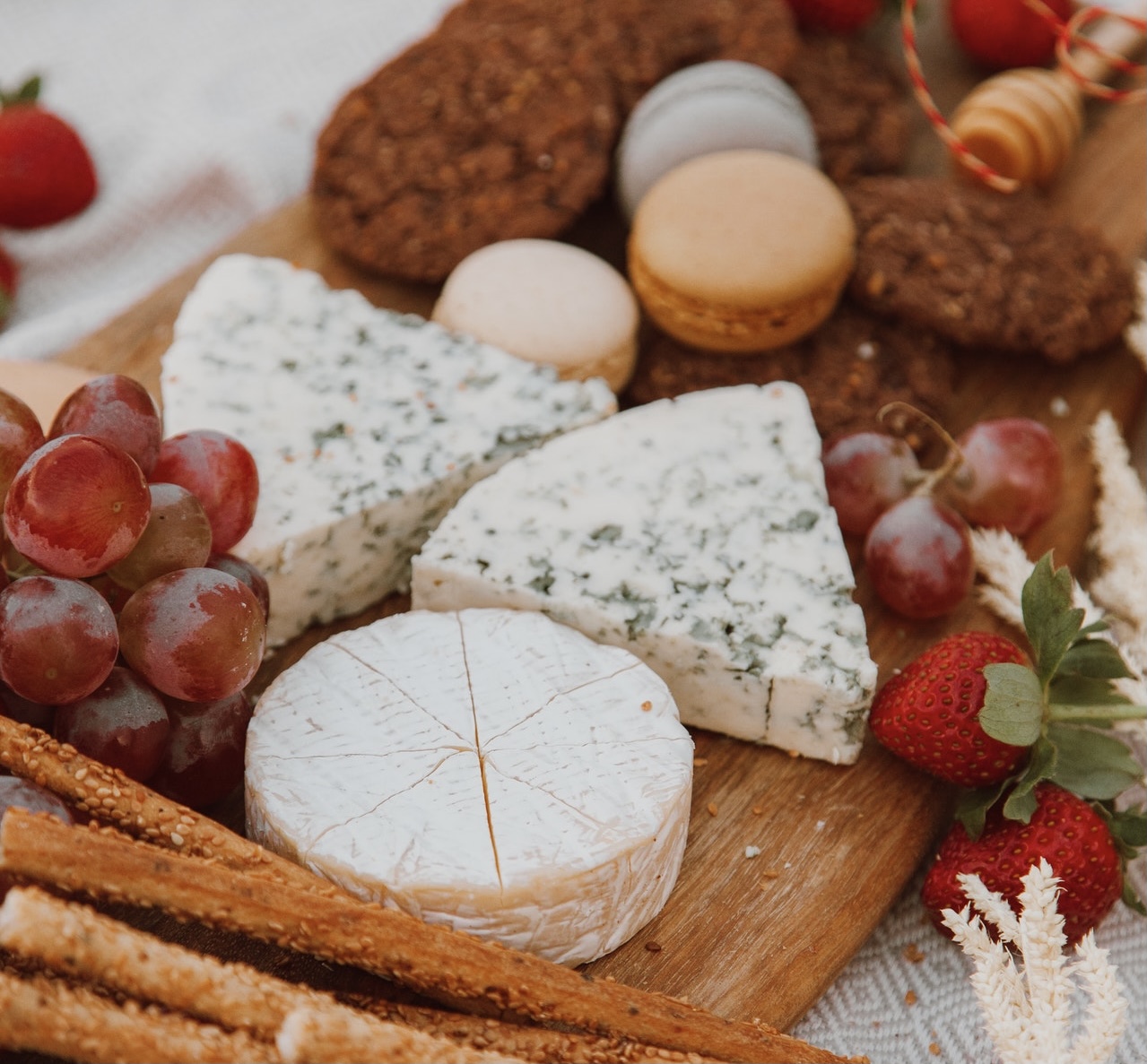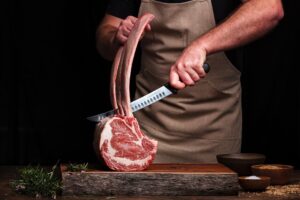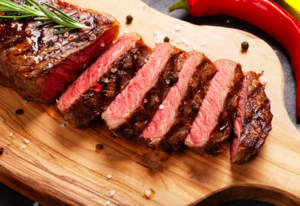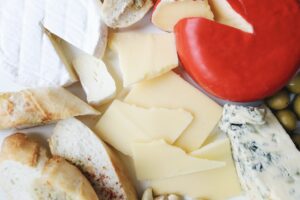Blue Cheese is not the thing for everybody, but it’s worth trying once. Apart from the three iconic blues—Roquefort from France, Stilton from England and Gorgonzola from Italy, there are many other types of blue cheese. Here, we’ll introduce 11 types of blue cheese, and some are suitable for beginners thanks to their mild flavors. Let’s dive in!
► Read More: What Is Blue Cheese? How It Is Made? | FAQs of Blue Cheese
Table of Contents
1. Chiriboga Blue (Germany)
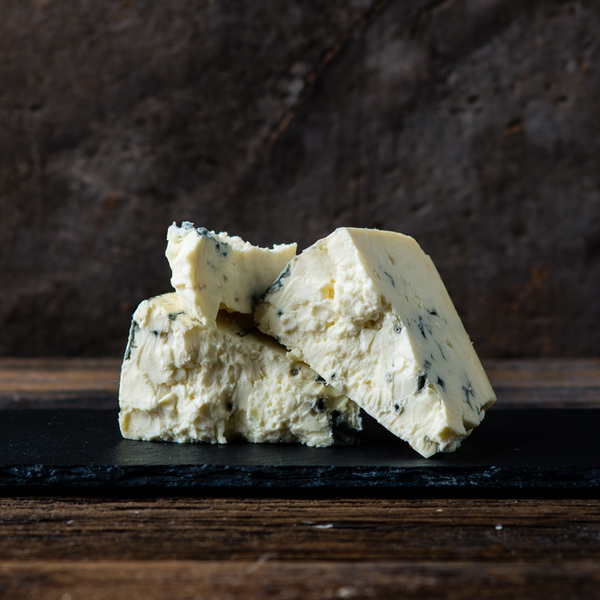
Milk Type: Cow
Mold: Penicillium roqueforti
Pasteurised: Yes
Aging Time: 2-4 months
Texture: Semi-soft
Country of Origin: Bavaria, Germany
What Is Chiriboga Blue?
Chiriboga Blue Cheese comes from Bavaria, Germany which is one of the types with a mild flavor. Although the original recipe of this Bavarian cheese is based on Roquefort, it has a denser and creamier texture as well as less intense flavor. Therefore, it’s sometimes described as blue cheese ice cream.
This mild blue is made from cow’s milk. It is creamy and buttery with a subtle complexity. There is a mix of sweet, nutty, grassy, piquant and acidic bites. Yet, its mildness makes it a suitable choice for those who are new to blue cheese.
Characteristics of Chiriboga Blue
- Creamy and Buttery
- Mild
- A Bit Sweet, Nutty, Grassy, Piquant and Acidic
How to Enjoy Chiriboga Blue?
Chiriboga Blue tastes wonderful with sparkling drinks such as champagne, prosecco and lambrusco.
2. Fourme d’Ambert (France)
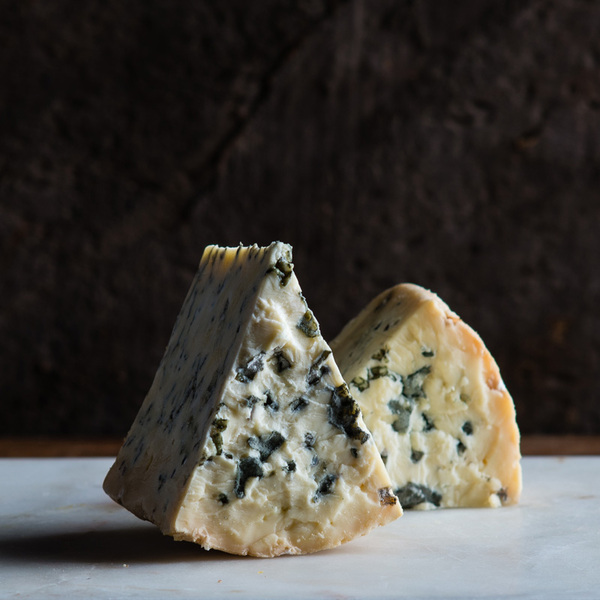
Milk Type: Cow
Mold: Penicillium roqueforti
Pasteurised: Depends on variety
Aging Time: 28 days to 4 months
Texture: Semi-hard
Country of Origin: France
What Is Fourme d’Ambert?
Fourme d’Ambert is one of the oldest French cheeses which can date back to Roman times, that is nearly 1500 years ago. This old cheese is somewhat similar to Roquefort in that the difference is milk. Fourme d’Ambert is made from cow’s milk sourced from the Auvergne region of France and aged for a minimum of 28 days, while Roquefort is made from ewe’s milk.
This cow blue cheese is silky smooth and soft with abundant blue spots, yet it is not as piquant as Roquefort. It tastes less intense and salty with slight nutty notes. Its mild flavor makes it a nice blue cheese for beginners.
Characteristics of Fourme d’Ambert
- Silky Smooth
- Soft
- Mild
- With Slight Nutty Notes
How to Enjoy Fourme d’Ambert?
Since Fourme d’Ambert tastes mild, it’s great to pair with full-bodied wine. Also, honey, walnuts and pain de campagne are excellent with this French cheese.
3. Maytag Blue Cheese (United States)
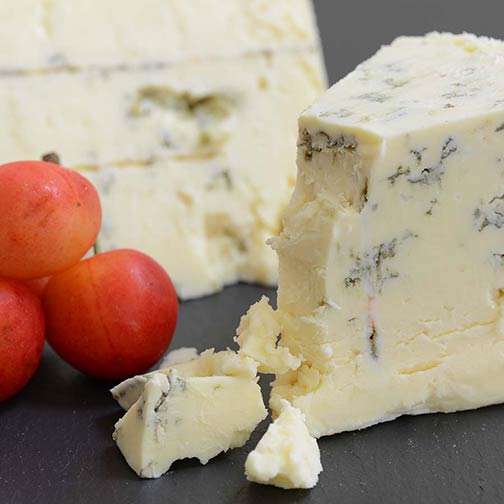
Milk Type: Cow
Mold: Penicillium roqueforti
Pasteurised: Yes
Aging Time: Several months
Texture: Semi-hard
Country of Origin: United States
What Is Maytag Blue Cheese?
Maytag Blue Cheese is one of the modern cheese types that was invented in 1941 by Frederick L Maytag II and microbiologists from Iowa State University. It is made from the milk of Holstein cattle of local Iowa dairy farms, and added with Penicillium roqueforti that creates beautiful veins. Each of them is hand-wrapped in foil for sale.
This American blue cheese is aged in caves where it is cool and humid. After months, a moist, creamy and crumble cheese is produced. It tastes a little bit pungent with a pleasant lemony finish.
Characteristics of Maytag Blue Cheese
- Moist, Creamy and Crumble
- A Bit Pungent
- Lemony Finish
How to Enjoy Maytag Blue Cheese?
Maytag Blue Cheese is delicious on salads or burgers. It is great with port wine as well.
4. Gorgonzola (Italy)
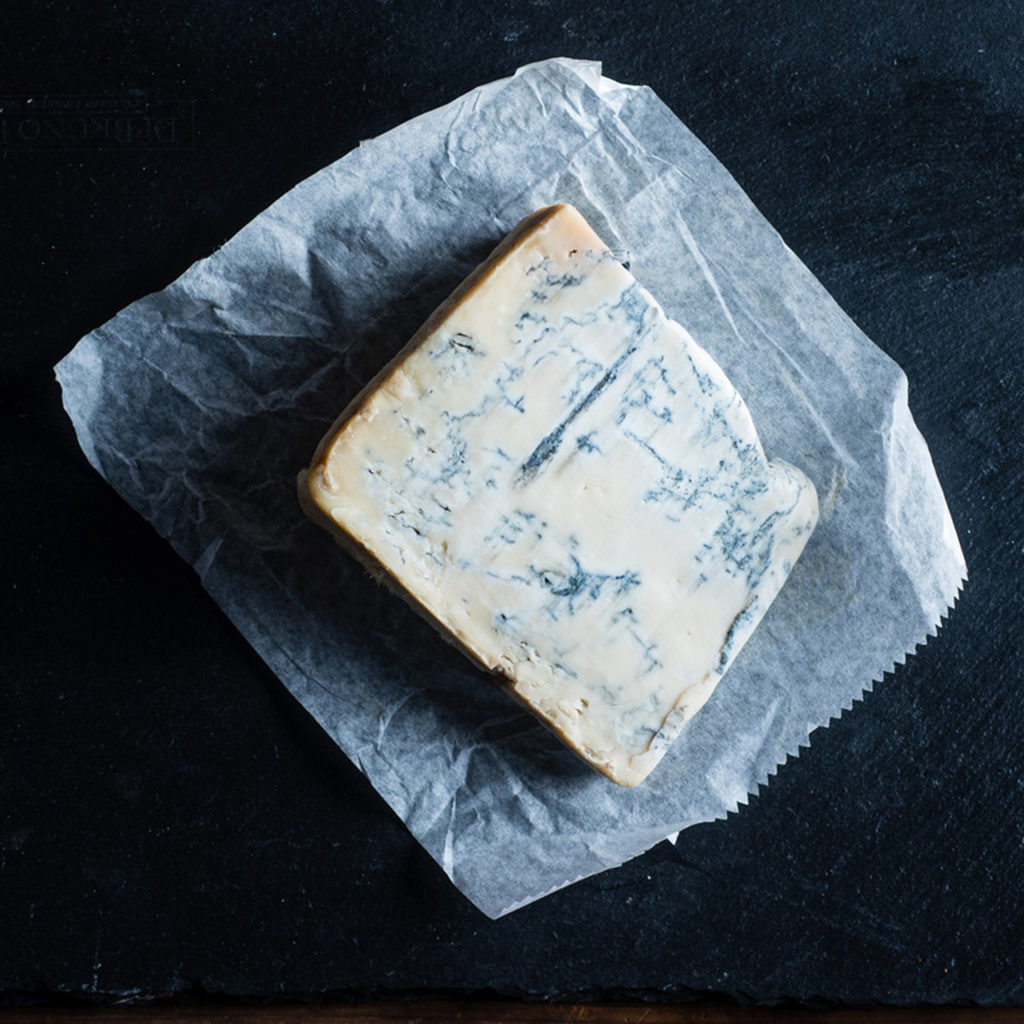
Milk Type: Cow
Mold: Penicillium glaucum
Pasteurised: Yes
Aging Time: 3-4 months
Texture: Soft
Country of Origin: Gorgonzola, Italy
What Is Gorgonzola Cheese?
This old Italian cheese originates from Gorgonzola, Milan. Like many traditional, artisanal cheeses, Gorgonzola cheese is registered with the status of Protected Designation of Origin (PDO; DOP in Italian) which guarantees the authenticity.
Gorgonzola cheese is made from cow’s milk with nice blue veins and a reddish gray rind. It is crumbly but soft, nutty and mushroomy. The flavors are typically milder than most of the other blue cheeses. Clearly said, it varies from age, from mild to sharp. Young Gorgonzola tends to be creamy and finishes with a slightly acidic taste while the old version is stronger and follows with a pungent notes.
Characteristics of Gorgonzola Cheese
- Crumbly and Soft
- Nutty and Mushroomy
- Young: Creamy and Slightly Acidic
- Old: Stronger and Pungent
How to Enjoy Gorgonzola Cheese?
Gorgonzola cheese is versatile to enjoy. Young Gorgonzola is great to eat straight thanks to its mild flavor, honey and grapes also pair well with it. The mature one tastes amazingly on risotto, pasta and pizza.
► Read More: What Is Gorgonzola Cheese? Is It Blue Cheese?
5. Stilton (England)

Milk Type: Cow
Mold: Penicillium roqueforti
Pasteurised: Yes
Aging Time: At least 9 weeks
Texture: Semi-soft
Country of Origin: Stilton, England
What Is Stilton Cheese?
Stilton is actually the name of a village in England, which is also the origin of Stilton cheese. There are two varieties, one is blue that involves Penicillium mold and with blue streaks; another one is white which does not have any streaks. When it is not specifically mentioned, it usually refers to blue.
Under EU law, Stilton cheese enjoys Protected Designation of Origin status (PDO). One of the criteria to use the name “Stilton Cheese” is that the production must use local cow’s milk sourced from one of the three counties of Derbyshire, Leicestershire and Nottinghamshire.
Stilton Blue Cheese is beautifully marbled with blue veins, crumbly but quite soft. It tastes bold, rich and complex, starts with creamy and nutty flavor and then finishes with salty notes.
Characteristics of Stilton Cheese
- Crumbly
- Fairly Soft
- Bold and Rich
- Creamy
- Nutty and Salty
How to Enjoy Stilton Cheese?
Stilton cheese can be eaten in many ways. It is wonderful with various foods from pasta and risotto to honey and nuts.
6. Shropshire Blue (Scotland)
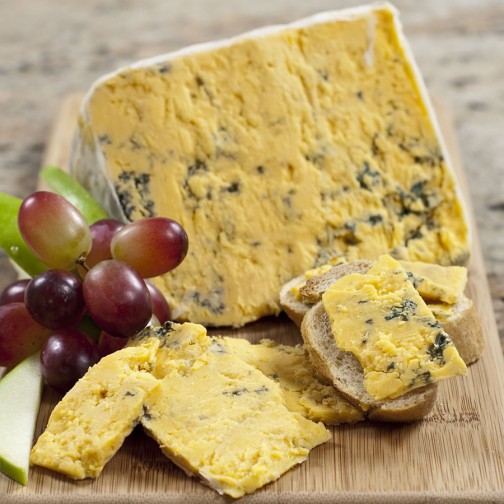
Milk Type: Cow
Mold: Penicillium roqueforti
Pasteurised: Yes
Aging Time: 10-12 weeks
Texture: Semi-soft
Country of Origin: Scotland
What Is Shropshire Blue?
Shropshire Blue is a relatively new cheese that was first produced in the 1970s in Scotland. It originates from Inverness but not Shropshire, yet the name was chosen for the sake of increasing popularity. The production process is similar to Stilton cheese and so it’s sometimes described as a cross between Stilton and Cheshire.
This new cheese is made from cow’s milk and vegetable rennet. You can easily spot it among various blue cheeses because it’s orange in color with blue veins and a brown rind. The orange comes from carotene but not annatto (a common coloring agent for cheesemaking); therefore the color is more yellow.
Shropshire Blue is fairly soft, and tastes sharp, strong as well as a bit tangy. Compared with Stilton, it is slightly sharper and creamier.
Characteristics of Shropshire Blue
- Orange in color
- Fairly Soft
- Sharp and Strong
- A Bit Tangy
How to Enjoy Shropshire Blue?
Shropshire Blue pairs nicely with fresh fruits such as apple and pear slices. For drinks, Burgundy or Riesling are the first choices.
7. Roquefort (France)
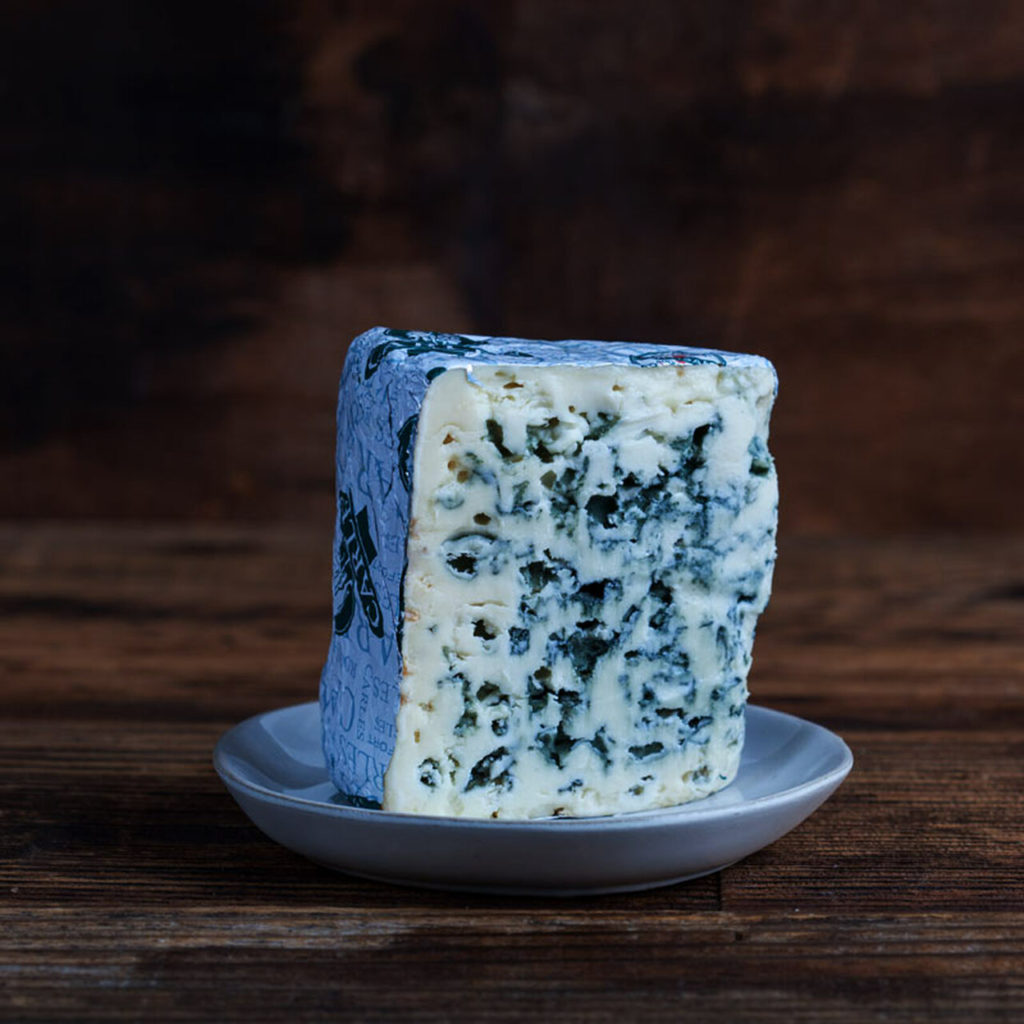
Milk Type: Ewe (Sheep)
Mold: Penicillium roqueforti
Pasteurised: No
Aging Time: 5 months
Texture: Semi-hard
Country of Origin: Roquefort, France
What Is Roquefort Cheese?
Roquefort probably is the most well-known blue cheese around the world. Kings and popes love it a lot and so it has another name—the King of Cheeses.
It is named after its origin, Roquefort, southern France. It is a commune that is famous for its ewe derived products such as milk, wool and meat. What’s more, visitors can visit the Combalou caves, where the Roquefort cheese is traditionally aged.
In fact, there is a beautiful legend about the discovery of Roquefort cheese. It is said that years ago, there was a youth eating bread and ewes’ milk cheese for lunch. And he saw a beautiful girl far away and ran to meet her. Thus, the lunch was left in a cave nearby. After a few months, he found some mold had grown on the cheese which is Penicillium roqueforti, this is the first discovery.
The real Roquefort cheese is awarded the status of appellation d’origine contrôlée (AOC; meaning “Controlled Designation of Origin”) status. To bear the name Roquefort, there are several criteria. For example, the milk must be raw and not heated above 93°F (34°C); and the Penicillium roqueforti must be produced from the natural caves in Roquefort.
This French blue cheese has blue veins and spots across the whole white body. It is crumbly, slightly moist and creamy with a sharp, intense and tangy flavor.
Characteristics of Roquefort Cheese
- Crumbly
- Slightly Moist
- Creamy
- Sharp, Intense and Tangy
How to Enjoy Roquefort Cheese?
Roquefort cheese has a complex sharp flavor, and so it matches with honey and apple flawlessly. Alternatively, it goes well with meat such as steak.
8. Bleu d’Auvergne (France)
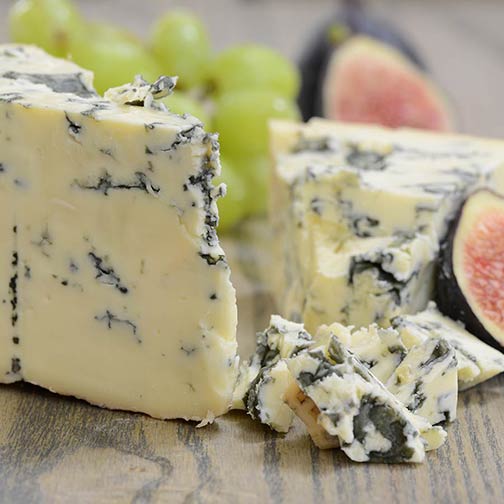
Milk Type: Cow
Mold: Penicillium roqueforti
Pasteurised: Depends on variety
Aging Time: 2 months
Texture: Semi-soft
Country of Origin: France
What Is Bleu d’Auvergne?
The name of Bleu d’Auvergne comes from its origin—the Auvergne region of south-central France. It is often regarded as the cow’s milk version of Roquefort but literally it’s creamier and more buttery. Same as Roquefort cheese, it is granted the AOC status which certifies the authenticity.
Bleu d’Auvergne is ivory or pale yellow in color with blue dots. It tastes creamy, smooth and moist with a grassy and herbaceous flavor. The longer the aging time, the stronger the flavor. The minimum aging length of Bleu d’Auvergne is 4 weeks which is relatively short for blue cheeses. Therefore, it is fairly strong, pungent and salty but to a lesser extent when compared to other blue cheeses.
Characteristics of Bleu d’Auvergne
- Grassy and Herbaceous
- Quite Strong and Pungent
- Less Salty
How to Enjoy Bleu d’Auvergne?
Bleu d’Auvergne cheese is very suitable to use as dressings especially on salad and pasta. It also pairs exceptionally well with sweet wines like sauvignon blanc.
9. Danish Blue / Danablu (Denmark)

Milk Type: Cow
Mold: Penicillium roqueforti
Pasteurised: Yes
Aging Time: 8-12 weeks
Texture: Semi-soft
Country of Origin: Denmark
What Is Danish Blue Cheese?
Obviously, this blue cheese originates from Denmark. It was invented in 1972 by a Dane with the purpose of emulating Roquefort Cheese from France. Yet, Danablu is made from full-fat cow’s milk and homogenized cream while Roquefort uses ewe’s milk, and so Danablu has a milder flavor.
Danish Blue generally has no rind, and the body is milky white or pale yellow with blue veins and holes. It is semi-soft, slightly moist and creamy; tastes sharp and salty and is braced with a mild bitterness.
Characteristics of Danish Blue Cheese
- Soft and Slightly Moist
- Creamy
- Sharp and Salty
- Mild Bitterness
How to Enjoy Danish Blue Cheese?
Danish Blue Cheese is ideal to serve with meat such as veal, seared steak and pork, just melt it on the cooked meat which enriches the whole dish.
10. Cambozola (Germany)
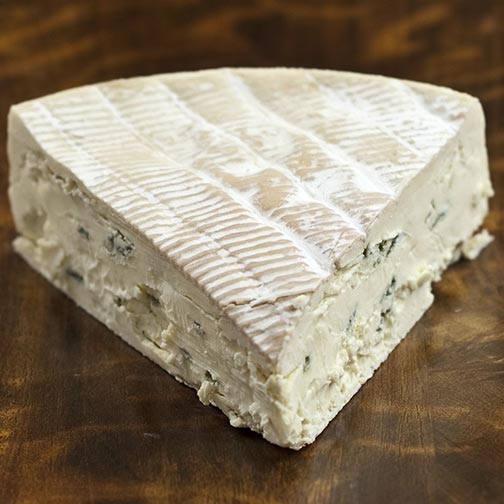
Milk Type: Cow
Mold: Penicillium camemberti and Penicillium roqueforti
Pasteurised: Yes
Aging Time: 2-4 weeks
Texture: Soft
Country of Origin: Germany
What Is Cambozola Cheese?
Cambozola originated from Bavaria in southern Germany. It was produced in around 1900, and was mass-produced until the 1970s by the cheese company Champignon.
This German cheese is actually a mix of white mold cheese and blue mold cheese. It combines these two types of cheese, so it has a white mold rind with a blue veins body, and so it’s sometimes called Blue Brie. In fact, its name consists of the prefix of Camembert (French white mold cheese) and the suffix of Gorgonzola (Italian blue cheese).
It combines not only the name but also the characters of these two cheeses. Cambozola is soft, smooth and mushroomy like Camembert while it’s also sharp and pungent as blue cheeses. That’s why it’s more widely accepted.
Characteristics of Cambozola Cheese
- White Mold Rind
- Soft and Smooth
- Mushroomy
- Sharp and Pungent
How to Enjoy Cambozola Cheese?
Cambozola cheese is fantastic with rye or walnut breads, fresh fruits like apples and grapes, as well as wine like Chardonnay.
11. Cabrales (Spain)

Milk Type: Cow / Goat / Sheep
Mold: Penicillium roqueforti
Pasteurised: No
Aging Time: 2-4 months
Texture: Semi-hard
Country of Origin: Spain
What Is Cabrales Cheese?
Cabrales cheese comes from Spain that is made from cow’s milk, or mixing of goat and sheep milk. It is also under the Protected Designation of Origin (PDO) status. The traditional Cabrales was wrapped in moist maple leaves, but the cheese with PDO stamp is required to be packed in dark-green aluminum foil.
This Spanish blue cheese is strong, sharp, slightly acidic and salty, the version made from blended milks is even more complex.
► Read More: 13 Types of Goat Cheese Recommended (Don’t Miss It!)
Characteristics of Cabrales Cheese
- Strong and Sharp
- Slightly Acidic
- Slightly Salty
How to Enjoy Cabrales Cheese?
Cabrales cheese matches with dry sausages like salami flawlessly. Also, it goes well with red wine, crackers and fruit.
► Read More: What Is Salami Made Of? Is It Healthy & Keto? | Salami 101
Summary Chart of Different Types of Blue Cheese
| Types of Cheese | Origin | Milk Type | Aging Time | Texture | Characteristics |
| Chiriboga Blue | Germany | Cow | 2-4 months | Semi-soft | Creamy and Buttery Mild A Bit Sweet, Nutty, Grassy, Piquant and Acidic |
| Fourme d’Ambert | France | Cow | 28 days to 4 months | Semi-hard | Silky Smooth Soft Mild With Slight Nutty Notes |
| Maytag Blue Cheese | United States | Cow | Several months | Semi-hard | Moist, Creamy and Crumble A Bit Pungent Lemony Finish |
| Gorgonzola | Italy | Cow | 3-4 months | Soft | Crumbly and Soft Nutty and Mushroomy Young: Creamy and Slightly Acidic Old: Stronger and Pungent |
| Stilton | England | Cow | At least 9 weeks | Semi-soft | Crumbly Fairly Soft Bold and Rich Creamy Nutty and Salty |
| Shropshire Blue | Scotland | Cow | 10-12 weeks | Semi-soft | Orange in color Fairly Soft Sharp and Strong A Bit Tangy |
| Roquefort | France | Ewe (Sheep) | 5 months | Semi-hard | Crumbly Slightly Moist Creamy Sharp, Intense and Tangy |
| Bleu d’Auvergne | France | Cow | 2 months | Semi-soft | Grassy and Herbaceous Quite Strong and Pungent Less Salty |
| Danish Blue | Denmark | Cow | 8-12 weeks | Semi-soft | Soft and Slightly Moist Creamy Sharp and Salty Mild Bitterness |
| Cambozola | Germany | Cow | 2-4 weeks | Soft | White Mold Rind Soft and Smooth Mushroomy Sharp and Pungent |
| Cabrales | Spain | Cow / Goat / Sheep | 2-4 months | Semi-hard | Strong and Sharp Slightly Acidic Slightly Salty |
Conclusion
Great, you’ve just finished these types of blue cheese. If you are new to blue, why not try those cheese types with milder tastes such as Chiriboga Blue and Fourme d’Ambert. You must fall in love with it!
If you buy on Gourmet Food Store.com, use our unique discount code: KitchenTeller on the Basket page or the Payment page during checkout to enjoy 10% OFF!
If you buy on Di Bruno Bros, click HERE to check the latest discount!
► Read More: 20+ Types of Cheese Must To Know | The Most Complete Cheese Guide
► Read More: What & How Cheese Is Made? | Cheese Beginner’s Guide
